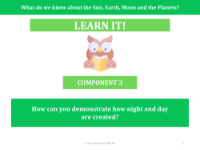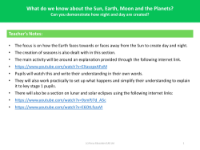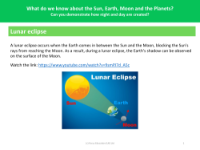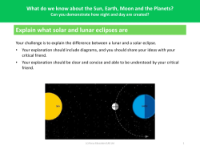Solar eclipse - Info sheet

Science Resource Description
An eclipse is a celestial event that occurs when one object in space blocks an observer's view of another. On Earth, we can witness two main types of eclipses: lunar and solar. A solar eclipse specifically takes place when the Moon travels between the Earth and the Sun, temporarily obscuring the Sun's light and casting a shadow over certain regions of the Earth. This natural phenomenon offers a unique spectacle that can be observed from specific locations on our planet, depending on the Moon's path and the alignment of these celestial bodies.
Understanding eclipses also requires knowledge about the Sun, Earth, Moon, and the planets in our solar system. This encompasses the roles they play in creating phenomena such as night and day. A demonstration of how the Earth's rotation on its axis leads to the cyclical pattern of daylight and darkness can provide insight into these daily occurrences. By exploring these concepts, one can gain a deeper appreciation for the intricate dance of celestial mechanics that governs the observable universe.






